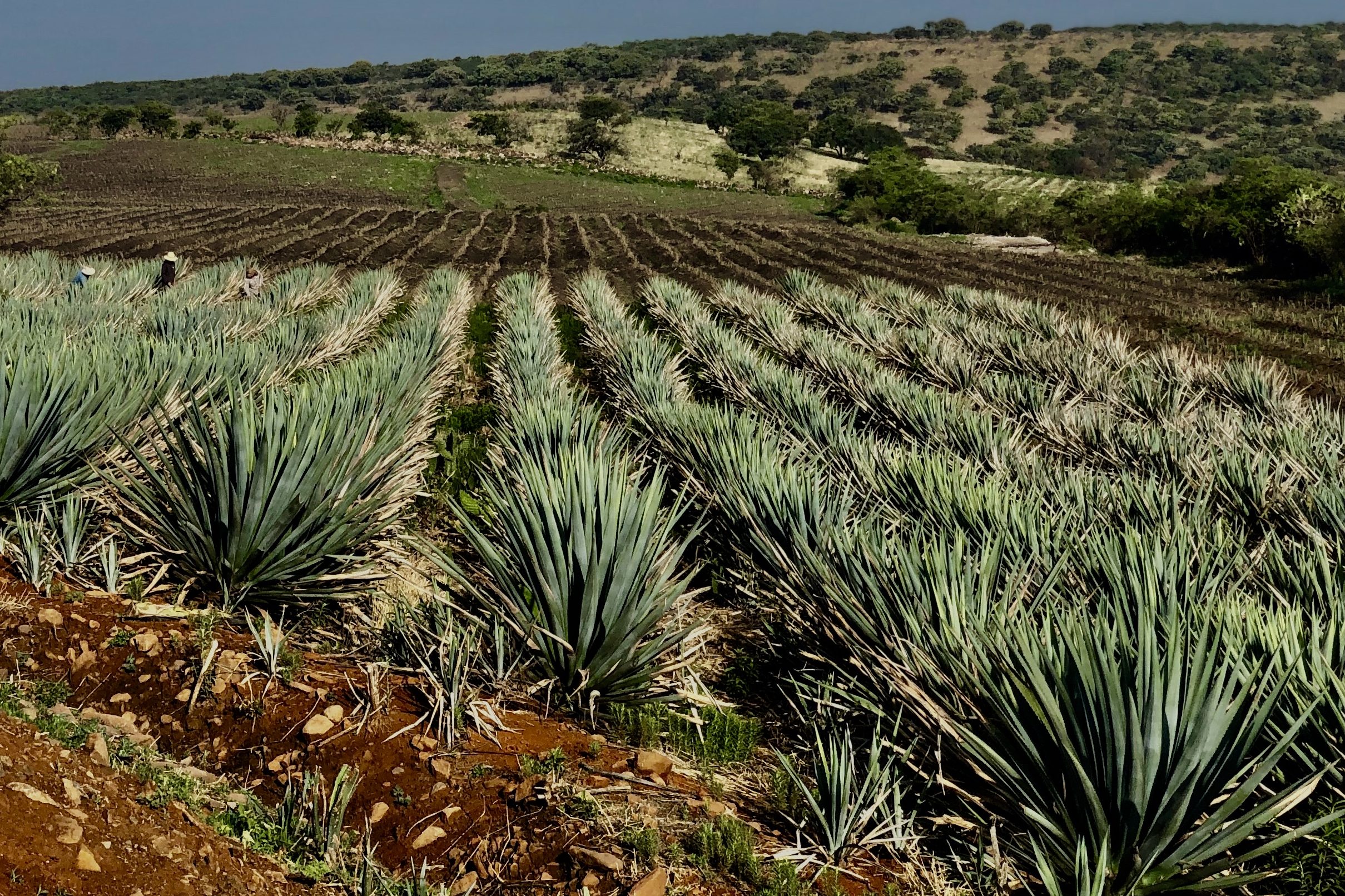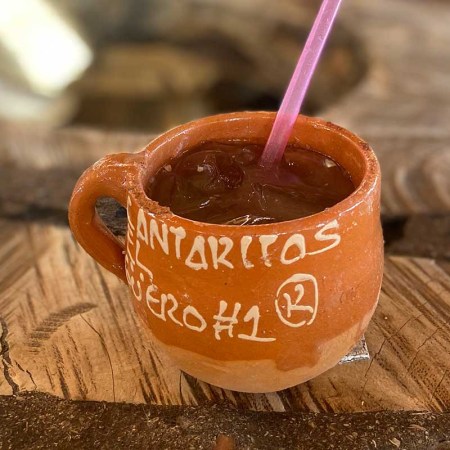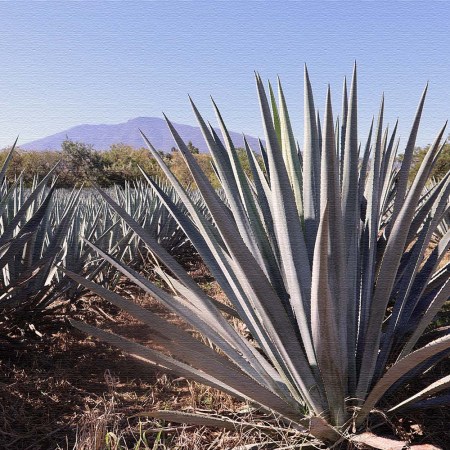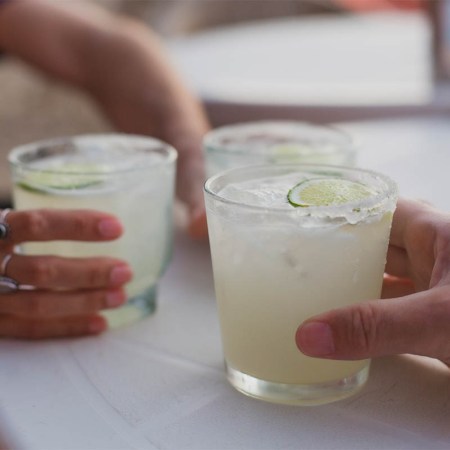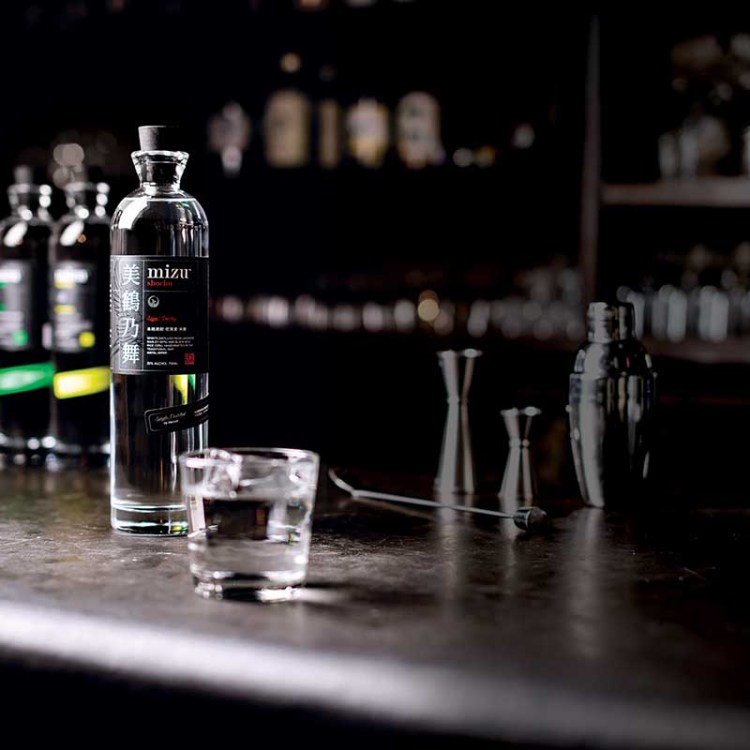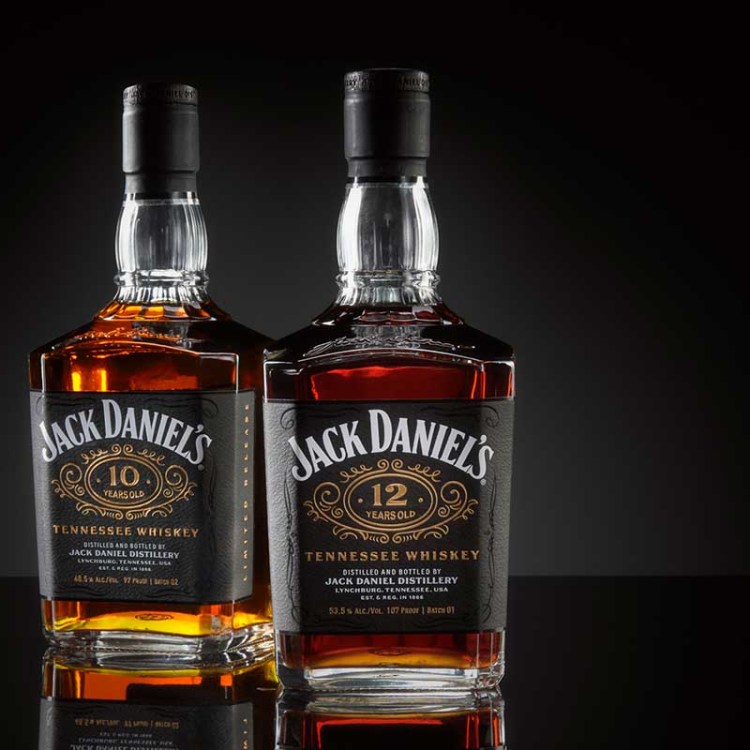There are thousands — yes, thousands — of tequila brands. And for good reason. Sales of the spirit continue to rise year to year, and agave spirits (which includes mezcal, although that fraction of the category is fairly tiny) make up the third-largest spirits category in the U.S., behind only vodka and whisky, according to IWSR Drinks Market Analysis.
Basically, everyone likes tequila.
So if you’re going out this year for Cinco de Mayo (or ordering in), tequila will be on the menu. Below, we’ve highlighted 30+ of those thousands of tequila brands that are worth your time and money, all of which we’ve sampled and tested in recent months to identify the very best emerging labels and bottles on the market, along with some old standbys that never get old. We started this list in 2021; this year, we added a few newcomers and changed a few picks if a brand we liked came out with something new (and better).
For the most part, we tried to narrow our selections to tequilas you can actually have a chance of trying, either via a good local bar, liquor store or online shop, even if the brand was relatively new or under the radar.
Undoubtedly, we skipped something you liked (e.g, I like Casamigos Reposado, but you’ve undoubtedly tried it yourself). If you want more selections, check out our other fine lists (best tequila for margaritas, best tequila under $30, etc.).
In no particular order, some of our tequila favorites:

Casa Noble
These estate-grown organic tequilas, the brainchild of Maestro Tequilero Jose “Pepe” Hermosillo, have recently gone through a pretty big relaunch, with new bottles and a slight reformulation — all three expressions are ideal for sipping. You can read our in-depth review here.

LALO
Eduardo “Lalo” González is the co-founder of his brand and the grandson of Don Julio González (of Don Julio tequila fame). So we have a family legacy and zero cultural appropriation here, a rarity in the modern tequila realm. The agave here hails from the Jalisco Highlands, and during fermentation, a proprietary yeast used in Champagne is introduced. Available as a blanco only, there is a bit of a wine note on the nose, while the taste is clean, a bit fruity and even delivers notes of sweet potato.

Casa Rica
A California-based tequila started by former restaurateur Justin Urich, the Rosado here gets its color not from wine barrel aging, but via extracting and macerating the self-fermenting red spots on the piñas. Similar to their blanco release, you’ll get a lot of grass on the nose and lemon and peppery notes on the palate — along with, interestingly enough, vanilla notes that you’d seem to more likely find in an aged tequila. Read our review here.

Maestro Dobel
Are cristalino tequila bullshit? It’s aged tequila that’s been filtered so it looks clear and achieves a smoother, lighter mouthfeel. Not sure why we’re stripping away potential flavor here, but Maestro Dobel is a leader in the category and their 50 Christalino release — which blends aged tequilas from both Eastern European and American oak barrels — is an extra añejo that’s as flavorful, almost like butterscotch and dates. (For something that maintains more of the agave flavor, try their much more inexpensive Diamante release.)

Lobos 1707
These tequilas are finished in Pedro Ximenez (PX) wine barrels from Spain, which makes the releases more interesting than your average celebrity-backed tequila … oh, did we mention LeBron James is a partner? Go for the reposado: Those oak barrels provide some caramel/vanilla notes, which occur on both the nose and the palate. As for the finish? Crème brûlée came to mind. Read our full review here.

Siempre
Siempre’s blanco (plata) tequila was launched in 2015, and the reposado and añejo expressions arrived last year. The repo, aged in new barrels for 2-6 months, is closer to what you’d usually find in an añejo. The caramel, vanilla and wood notes are strong, but thankfully the agave isn’t lost in the aging. An excellent release — and you can read more about the brand’s unique backstory here.

Santera
The blanco and añejo here generally excel in their respective categories — the blanco is bright and grassy, the añejo is a worthy replacement for your bourbons and darker spirits. They’re good on their own, but I see these as elevated spirits for mixing (I tried the blanco infused with Hibiscus tea, then shaken with agave nectar and lime juice, and it was divine … h/t Liquor Lab for the recipe).

PaQui
I usually shy away from descriptors like “smooth and flavorful,” so I wasn’t expecting much with this new brand. But there’s a real sweetness here and a powerful citrus note in the Silvera (blanco) release, which uses a fresh wine yeast in the fermentation and stainless steel tanks, leaving a really clean, agave-centric winner.

El Tequileño
It’s hard not to find a tequila on this list that’s not 100% Blue Weber agave. And while the world of mixtos is not always great, El Tequileño is a 71 percent agave and 29 percent piloncillo tequila that’s cheap and yet good enough to serve as the base for the batanga at La Capilla, a frequent “World’s 50 Best Bars” entry. On the other end of the spectrum: the distillery also has several premium, limited-edition, 100% blue weber agave releases, like their recent limited-edition Sassenach Select (read our review here).

Mijenta
Aged to six months in a blend of American white oak, French oak and French acacia casks — an alternative to oak that adds body and texture — this is one of the most complex reposados I’ve ever tasted. A lot of vanilla here, but also orange and chocolate, with a delectable mouthfeel.

Cincoro
An agave spirit from an ownership group that includes multiple NBA owners (including Michael Jordan). The bottle is sleek and aggressively tall, a back-bar disruptive design co-created by a Nike guru and no. 23 himself. Authentic? By most standards, no. Unequivocally excellent? Yes — the blanco, reposado and añejo all have distinct character. And pro tip: You can skip the extra añejo, which is fine but doesn’t justify its four-figure price tag. Read more here.

Tequila Avión
The second release from Tequila Avión in their Reserva Range, their cristalino is a blend of añejo and extra añejo that is double charcoal filtered. The nose is very reminiscent of a blanco tequila — you’ll get the minerality and grassiness. But on the palate, there is a candied citrus note, plus vanilla and a surprising amount of chocolate. Read our review here.

Santo Spirits
Sammy Hagar’s follow-up to Cabo Wabo — with the help of friend and celebrity chef Guy Fieri — is approachable and really brings out all the agave goodness. That’s the blanco. The mezquila (blanco + Espadin mezcal) is pretty much just a spicy tequila, and it’s good, name aside. The reposado, however, is a standout. Resting just four or five months, this isn’t an expression that’s wanting to be an añejo. Instead, it’s the best of the blanco (fruity, agave-forward) with just the slightest hint of oak and vanilla. Your batanga will never be better. (Read our interview with Hagar on his tequila here).

Código 1530
Country star George Strait being an owner isn’t the interesting part here, nor is the seed-to-sip ethos (they utilize their own agave, production and bottling processes). What’s unique here is the aging process; the aged expressions are finished in oak barrels that once held Napa Valley cabernet, and there’s even a “Rosa” expression that’s pink and has a nice juicy and fruity element.

Don Julio
The first tequila I actually loved (and still do), Don Julio was started in 1942 — which explains the name of DJ’s sipping tequila that you see on the top shelf of most bars. For something a bit different from their core line, try the just-released Don Julio Primavera, which takes their Reposado release and finishes it in orange wine casks.

Tequila Zarpado
There’s nothing unique about this new tequila brand — sans the involvement of a Boston-based company (Latitude Beverage), which is a bit strange on the surface — except the price. To find a blanco that with real character (earthy, a slight minerality, spicy) at $25 is a steal.

Optimist Botanicals Smokey
Yes, you have an alcohol-free option, and it’s crafted by a master distiller. The Smokey is gentle and flavorful and can work as a tequila / mezcal base for a cocktail. For more booze-free options for any day of the year, read our story here.

21 Seeds
Blanco tequila infused with grapefruit and hibiscus (they also offer Valencia Orange and Cucumber Jalapeño flavors). Also female-owned, also a rarity. The fruit on the nose here is exquisite. It’s not a sipper, but rather your ideal base for a Paloma.

Patrón
Chances are the bar you’re going to this week will have Patrón. You may have to pay extra for it — that’s fine. Even if you’re very familiar with this premium tequila, it’s nice to have around (and it’s additive-free, which isn’t as common as you think). We’ll stick with the silver (citrus, agave, pepper … it’s a nice, bright combo of flavors and aromas), but Gran Patrón Smoky is an interesting tequila take on mezcal.

Corazón
Not only did Corazón win World’s Best Tequila at this year’s World Tequila Awards, it hails from a female-owned distillery headed up by a female distiller. Does the Reposado match the hype? It features nice flavors of cooked agave, cinnamon and vanilla, falling a bit more toward an añejo. It’s rich and pleasant.

El Tesoro
Not all extra-aged tequilas lack character. Here, El Tesoro blends four- and five-year tequilas in old bourbon barrels to realize a delicate sipping tequila that delivers sweet and smoky notes in perfect lockstep. It works equally well as a pre-dinner palate cleanser or the perfect pairing with dessert, and at $99, represents great value.

Hornitos
A respectable and inexpensive tequila — their Plata (blanco) isn’t for deep contemplation, but it’ll be a crowd-pleaser for your mixed drinks or shots. And that versatility (and good price) is key here — it’ll work just fine for margaritas, palomas and, as we learned earlier this winter, spiked hot chocolate.

Dano’s Dangerous Tequila
Spending 12-18 months in virgin white oak barrels, this strangely named spirit — perhaps a nod to the company’s origins as an infused tequila — took home the best añejo at the 2020 San Francisco World Spirits Competition (in spite of its surprising Colorado backstory, the tequila now works with a fourth-generation, female-owned distillery that’s the second-oldest tequila distillery in the world). Not as heavy or sweet as other aged tequilas, this is a refined take on agave that veers more toward Cognac or wine.

G4
The Camarena family has been distilling tequila since 1937. Fun story: This line of additive-free tequilas was actually recommended to me, on the sly, by another tequila brand on this list. I can see why: The blanco is citrusy and grassy, and it features a slight minerality and even a hint of cloves — it’s exceptionally bright and the mouthfeel is exquisite.

Lunazul
There’s a lot of heritage here: Lunazul was founded by Francisco Beckmann, a seventh-generation descendent of Jose Antonio de Cuervo. And the brand’s big selling point is to keep things affordable ($20 is a starting point for these expressions). Their El Humoso bottle, which gets its campfire element from smoked mesquite wood, is part of a small but growing trend in the tequila business to make things a bit smoky (but not quite like mezcal).

Tanteo
Owned by a co-op of agave farmers and featuring a workforce that’s 80-percent female? That’s great, but you still have to make an interesting product … and Tanteo does. Loosely inspired by a cocktail from Death & Co., the founders of Tanteo decided to make their tequila products infused … with the idea that you can use it as an instant base for spicy drinks. The jalapeño is a standout, and interestingly, their non-infused blanco is about as good as you can get in the category. A full overview of their history, along with recipes, can be found here.

Grand Mayan
“Take a look at our bottles,” as the Grand Mayan site requests. Certainly the best packaging for a tequila we’ve seen, the tequila inside is pretty nice, too — the reposado offers hints of caramel, oak and vanilla, without sacrificing the agave notes.

El Sativo
Claiming to be the first tequila to isolate terpenes in raw agave and maintain those properties throughout the distillation — which may contribute to “mood-lifting and energy-boosting attributes” (you’ll have to judge) — El Sativo can still be enjoyed like any other tequila (plus, it’s kosher, organic and vegan). The SFWSC winner for best blanco in 2020 features a peppery, fruity kick of agave, and certainly put me in a good mood.

Cutwater
While you may know the San Diego-based distillery for its ready-to-drink canned cocktails (or as a spinoff from Ballast Point Brewing), their bottled spirits are starting to get some recognition. To wit: this aged tequila, which won a SFWSC award in 2020 for best añejo. The oak, butterscotch and vanilla notes are readily present here — if you want an añejo for cocktails, this might be your best bet for the modest price.

El Luchador
Recently relaunched and inspired by lucha libre masked wrestlers, this modestly-priced line of tequilas features Reposado- and Anejo-aged expressions that rested in French white oak barrels that once held the wines of Puligny Montrachet. Interesting, but we’re here for the 55% ABV Distill-Proof Blanco Tequila, a surprisingly sweet and unsurprisingly robust spirit that should be your base for any tequila cocktail.

Tequila Fortaleza
Tequila enthusiasts rave about this agave release. As former bartender Ryan Wainwright (and now drinks brand ambassador) told us a few years back: “The flavors that come out of this tequila are the most interesting and ‘dirty.’ It could be the tahona-ground agave, but it’s most likely that the distillers ferment the agave in wood tanks, lending it to flavors like olive brine, citrus peel and fresh herbs. And I love the handwritten batch numbers on the back of every bottle. I suggest you taste different batches and find differences in each one.” So, start drinking.

Partida
Adding a sherry oak finish to tequila? Interesting. Making one of those releases a Cristalino Reposado? Definitely a first. So we have a spirit (Partida Roble Fino) from Mexico aged in bourbon barrels from the U.S. along with Scotland’s single malt barrels, and then finished in Oloroso casks from Jerez de la Frontera. (Meanwhile, Partida’s Cristalino Añejo — part of a different line from the brand — is the rare aged tequila that features notes of oak and vanilla but still maintains its fruity agave character.)

Casa Dragones
We’ve been big fans of this sipping tequila since InsideHook launched ten years ago — it was part of our first Father’s Day gift guide — though we usually let someone else pick up the tab when we want a sip. No exception for the Tequila Añejo Barrel Blend, which is matured in new French Oak and new American Oak, then blended together. The wood dominates on the nose, but the agave comes forward as you sip. It’s elegant, fruity and deceptively gentle.

Siete Leguas
Siete Leguas was the original producer of Patrón, and their own spirit maintains that personality but adds complexity. “Think of it like your favorite cast-iron skillet, then add 65+ years of care and dedication to the mix,” as L.A. restaurateur and tequila aficionado Clemente Heredia told us a little while back.

Milagro
We praised the ubiquitous (and inexpensive!) Milagro Silver as an ideal base for margaritas; it’s clean, crisp and features some nice peppery notes. The Barrel Reserve reserve adds just a hint of vanilla and oak — it’s certainly an elevated take, and worthy to drink on its own.

Insólito
Distilled at a very high (7,200 foot) elevation with custom equipment and utilizing a slow fermentation process, this not-quite-celebrity tequila (the band Midland is a partner) offers some unique taste profiles. The blanco has a vegetal note and some minerality — not for everyone, but something you’ll come back to. The reposado, however, features a wonderful, creamy mouthfeel and notes of butterscotch and baking spices, and should be a crowd-pleaser.

DE-NADA
Two millennial entrepreneurs are behind this tequila release (in collaboration with a fifth-generation distillery), which uses brick-oven roasted, estate-grown agaves and a local, natural yeast. One of the most versatile tequilas we’ve encountered recently — great on its own, but also a wonder in cocktails that normally would have been based in rum and bourbon.

Solento
An organic, small-batch, single-estate tequila from a brand founded by filmmaker and surfer Taylor Steele. The blanco is sweet and soft, and one you’d prefer to sip than mix.

Pueblo Viejo
If your local bar uses the blanco for shots, you’re in luck: while lacking character, it’s incredibly smooth (even the overproof 104 release).

Espolòn
The best margarita we tasted last year utilized a very basic recipe (Cointreau, lime juice, tequila, salty rim) and involved this blanco, which is bright and citrus-y with just enough pepper and spice to hold your drink up, but smooth enough to keep you going back for, well, way more than you should. It’s the perfect well mixing tequila for your bar, with a 750ml bottle usually ranging from $20 to $25.
This article was featured in the InsideHook newsletter. Sign up now.

